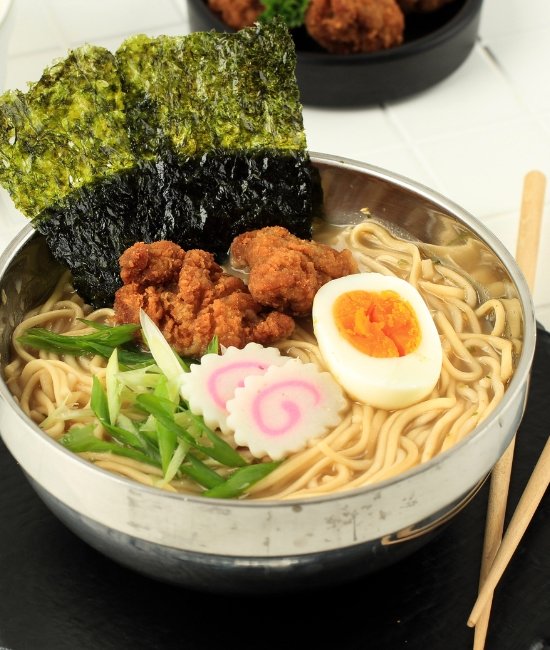Ramen is more than just a meal; it is a harmonious blend of flavors, textures, and techniques that have transcended cultures and captivated food enthusiasts worldwide. This Ramen Preparation Guide: Step by Step in India ensures you can create an authentic bowl of ramen that balances taste and presentation, no matter where you are. Let us dive into the meticulous art of preparing ramen.
Understanding the Basics of Ramen
Ramen is a Japanese noodle soup dish, typically consisting of a rich broth, wheat noodles, a variety of toppings, and a flavorful tare (seasoning base). In India, the availability of diverse ingredients allows for exciting twists while preserving authenticity.

Key Elements of Ramen
- Broth: The soul of ramen, ranging from clear and light (shio or shoyu) to creamy and rich (tonkotsu).
- Noodles: Springy, chewy wheat-based noodles designed to absorb the broth’s flavor.
- Toppings: Includes proteins like chashu (braised pork), ajitsuke tamago (marinated eggs), vegetables, and garnishes.
- Tare: The seasoning paste or liquid that defines the ramen’s flavor profile.
Step 1: Preparing the Perfect Ramen Broth
The broth forms the foundation of any great ramen bowl. Here’s how to create an authentic broth with Indian ingredients.
Ingredients for Ramen Broth
- Chicken bones or pork bones (alternatively, vegetable stock for a vegetarian version)
- Aromatics: Ginger, garlic, onions, and scallions
- Kombu (seaweed) and dried shiitake mushrooms for umami (optional but highly recommended)
- Soy sauce, miso paste, or salt for seasoning
Process
- Roast the Bones: Roast chicken or pork bones in an oven at 200°C for 30 minutes. This step enhances the broth’s depth.
- Simmer Slowly: Add bones to a large pot of water and bring to a boil. Skim off impurities and reduce to a gentle simmer.
- Add Aromatics: Include ginger, garlic, onions, and scallions. Simmer for 4–6 hours for a clear broth or 8–10 hours for a creamy texture.
- Strain and Season: Strain the broth and mix in soy sauce, miso, or salt to taste.
Step 2: Crafting the Perfect Ramen Noodles

While store-bought noodles are convenient, making your own noodles elevates the experience.
Ingredients for Ramen Noodles
- 500g all-purpose flour
- 1 tsp salt
- 1 tsp baking soda
- 200ml water
Process
- Mix and Knead: Dissolve salt and baking soda in water. Gradually mix the solution into the flour until a dough forms.
- Rest the Dough: Wrap the dough in plastic and let it rest for 30 minutes.
- Roll and Cut: Roll the dough into thin sheets and cut into noodles using a pasta cutter or knife.
- Cook the Noodles: Boil the noodles in salted water for 2–3 minutes. Drain and rinse with cold water.
Step 3: Preparing the Tare (Seasoning Base)
The tare defines the ramen’s flavor. Here’s a guide to preparing three classic types of tare:
- Shoyu (Soy Sauce) Tare:
- Mix soy sauce, mirin, sake, and a dash of sugar. Simmer for 10 minutes.
- Miso Tare:
- Blend miso paste with sesame oil, garlic, and a splash of sake.
- Shio (Salt) Tare:
- Dissolve sea salt in chicken stock with a hint of kombu extract.
Step 4: Selecting and Preparing Toppings
The toppings bring texture and visual appeal to your ramen. Here are classic toppings and their preparation steps:
- Ajitsuke Tamago (Marinated Eggs):
- Soft-boil eggs for 6 minutes, peel, and marinate in a mixture of soy sauce, mirin, and water for 4 hours.
- Chashu (Braised Pork):
- Roll pork belly into a log, tie with kitchen twine, and braise in soy sauce, sake, sugar, and ginger.
- Vegetables:
- Blanch spinach, bean sprouts, and corn kernels for freshness.
- Nori (Seaweed):
- Use toasted nori sheets for garnish.
Step 5: Assembling the Perfect Bowl
Assembling ramen is an art that combines precision and creativity.
Steps to Assemble
- Warm the Bowl: Preheat the serving bowl with hot water.
- Add Tare: Place 2–3 tablespoons of tare at the bottom of the bowl.
- Pour Broth: Ladle the hot broth over the tare, mixing gently.
- Add Noodles: Place freshly cooked noodles into the bowl.
- Arrange Toppings: Artfully layer the chashu, marinated egg, vegetables, and nori.
- Finish with Garnishes: Sprinkle sesame seeds, chopped scallions, or chili oil.
Ramen Preparation Tips for Indian Kitchens
- Substitutions for Local Availability:
- Use soy sauce alternatives like tamari for gluten-free options.
- Replace kombu with dried kelp or omit for a simpler broth.
- Innovative Twists:
- Incorporate Indian flavors with a hint of curry powder or chili masala.
- Experiment with paneer or tofu for a vegetarian protein source.
- Storage Advice:
- Broth and tare can be refrigerated for up to 3 days or frozen for longer shelf life.
Why Ramen Preparation is a Culinary Skill Worth Mastering

Mastering the art of ramen is about understanding balance—combining savory, umami, and aromatic flavors. In India, where spices and culinary diversity abound, ramen offers an opportunity to blend global flavors with local ingredients.
Conclusion
Creating authentic ramen at home is a rewarding culinary journey. With this Ramen Preparation Guide: Step by Step in India, we invite you to immerse yourself in the flavors, techniques, and artistry of this beloved dish. Whether you prefer traditional recipes or wish to infuse Indian flavors, this guide provides the foundation to master ramen like a pro. Ready your ingredients, and let the ramen-making adventure begin!
FAQ’s
Q1. What are the essential ingredients for authentic ramen?
Authentic ramen requires four main components: broth (shio, shoyu, miso, or tonkotsu), fresh wheat noodles, a seasoning base (tare), and toppings like chashu, marinated eggs, vegetables, and nori.
Q2. Can I make ramen noodles at home without a pasta machine?
Yes! You can roll the dough into thin sheets using a rolling pin and cut the noodles by hand with a sharp knife. It may take a bit longer, but the results are equally satisfying.
Q3. How can I adjust the recipe for vegetarian or vegan ramen?
Use vegetable broth as the base, incorporating kombu, dried shiitake mushrooms, and miso tare for umami. Replace animal-based toppings with tofu, blanched vegetables, and sesame seeds.
Q4. Can I prepare the broth and toppings in advance?
Absolutely! Ramen broth can be refrigerated for up to 3 days or frozen for longer. Toppings like chashu and marinated eggs can also be prepared a day in advance and stored in the refrigerator.
Q5. How can I add an Indian twist to my ramen?
Experiment with Indian spices like turmeric, chili masala, or garam masala in the broth or tare. You can also add paneer, tandoori chicken, or curry-flavored vegetables as toppings.







